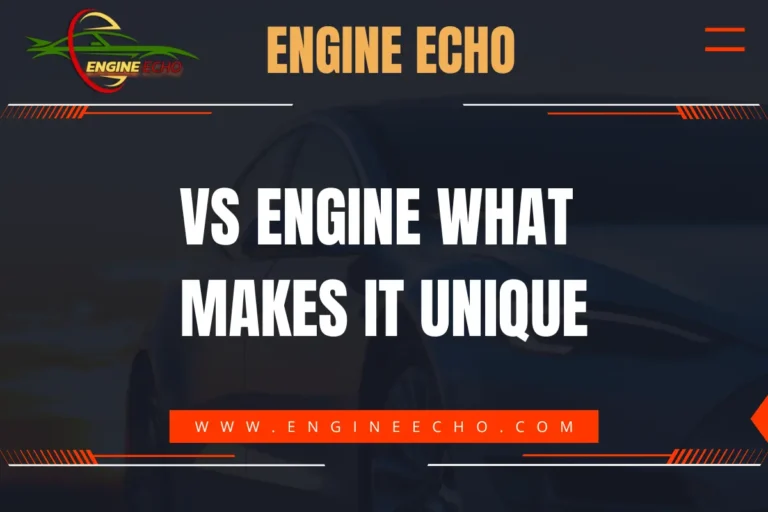Cars with Same Engine: Identical Powertrains

Key Takeaways
- Understanding Engine Sharing: Engine sharing among different car models allows manufacturers to cut costs, streamline production, and foster collaborations, which benefits both companies and consumers.
- Notable Examples: Many well-known car models from different brands, such as the Ford Mustang and Mazda RX-8, share identical engines, showcasing the widespread nature of this practice.
- Impact on Performance: Engine sharing can lead to different performance outcomes depending on how the engine is tuned, influencing the driving experience and consumer perception.
- Future Trends: As electric vehicles (EVs) rise in popularity, the nature of powertrain sharing is likely to evolve, with more focus on battery and motor technology.
- Case Studies: Instances like the collaboration between Toyota and Lexus or Mercedes-Benz and AMG highlight the success and strategic advantages of engine sharing in the automotive industry.
Introduction to Identical Powertrains in Different Cars
I remember the first time I found out that two cars I admired—one a powerful muscle car, the other a sleek sports coupe—shared the exact same engine. It was one of those moments that made me stop and think about how interconnected the automotive world really is. This really got me thinking, and I found myself diving deeper into the fascinating world of engine sharing. Why would manufacturers choose to put the same heart into two different beasts? This article is my way of unpacking that question and sharing the fascinating answers I’ve found.
Reasons Behind Engine Sharing
Cost Efficiency for Manufacturers
Creating a new engine isn’t cheap or easy—it takes years of hard work, research, and plenty of testing. I’ve always admired the engineering that goes into creating a powerhouse engine, but I also understand why not every model can afford a bespoke powertrain. By sharing engines across models, manufacturers can save on these development costs, allowing them to offer high-performance engines in cars that might otherwise not have the budget for such an investment.
Standardization and Ease of Production
Imagine trying to build two cars with completely different engines on the same production line—it’s a logistical nightmare. By standardizing engines across different models, manufacturers simplify their production processes, which often results in more consistent quality and easier maintenance down the line. I’ve seen this first-hand when servicing cars; parts availability and familiarity make a big difference in the long-term ownership experience.
Collaboration Between Different Car Brands and Companies
Engine sharing is not just about saving money; it’s also about leveraging expertise across brands. For instance, the collaboration between different brands within a large automotive group can lead to engines that are both powerful and reliable. These collaborations often bring out the best of both worlds, combining the engineering strengths of each brand involved.
Notable Examples of Cars Sharing the Same Engine
Ford and Mazda: 2.3L Duratec Engine
- Models: Ford Mustang and Mazda RX-8
- Engine: 2.3L Duratec I’ve always been a fan of the Ford Mustang’s muscle, but it was surprising to learn that the same engine could be found in the Mazda RX-8, a car known for its sharp handling and rotary-engine-like enthusiasm. The 2.3L Duratec engine serves both cars well, but it’s wild to think that two cars that couldn’t be more different in style actually share the same powertrain. Each brand has tuned it to fit their distinct character, and it’s fascinating to see how they’ve pulled it off.
Volkswagen and Audi: 2.0L TFSI Engine
- Models: VW Golf GTI and Audi A3
- Engine: 2.0L TFSI Having driven both the VW Golf GTI and the Audi A3, I can attest that while the engines might be identical on paper, the driving experiences are notably different. The 2.0L TFSI engine is a gem, but VW and Audi have done a great job tuning it to suit the sporty nature of the GTI and the more refined, upscale feel of the A3.
Toyota and Lotus: 1.8L 2ZZ-GE Engine
- Models: Toyota Celica and Lotus Elise
- Engine: 1.8L 2ZZ-GE The lightweight Lotus Elise is a car I’ve always admired for its purity of purpose—nothing but speed and handling in a minimalist package. It’s powered by the same 1.8L engine found in the Toyota Celica, a sporty but more practical car. This engine is a great example of how a reliable powertrain can find a home in two very different kinds of vehicles.
Nissan and Renault: VQ35DE Engine
- Models: Nissan 350Z and Renault Vel Satis
- Engine: VQ35DE The VQ35DE engine has become somewhat legendary in enthusiast circles, particularly for its role in the Nissan 350Z. But it’s not just about raw power; the same engine is used in the Renault Vel Satis, a luxury sedan that prioritizes comfort over performance. It’s fascinating to see how the same engine can be adapted to such different roles.
Cross-Brand Engine Sharing
Engines Shared Across Brands Under the Same Parent Company
When you start looking into it, you realize that engine sharing is everywhere, especially within large automotive groups. The Volkswagen Group, for example, uses its engines across a range of brands, from Volkswagen and Audi to Porsche. The same 4.0L V8 might power a Porsche Panamera and an Audi S8, each with its own flavor and performance tweaks, yet rooted in the same engineering excellence.
Examples from Major Automotive Groups
- Volkswagen Group: Sharing between brands like Volkswagen, Audi, and Porsche.
- PSA Group: Sharing between Peugeot, Citroën, and Opel.
The Role of Engine Tuning in Differentiating Shared Engines
Even when two cars share the same engine, the driving experience can feel worlds apart, thanks to tuning. I’ve had the chance to drive cars that, while technically the same under the hood, delivered entirely different sensations behind the wheel. This is where the magic happens. By tweaking the engine, manufacturers give each car its own unique feel and personality. Whether it’s adjusting the turbo boost for more power or retuning the exhaust for a more refined note, these changes can make all the difference.
Pros and Cons of Engine Sharing
Pros:
- Cost Savings: With the money they save, manufacturers can put more effort into making the cars look amazing and pack them with cool tech.
- Proven Reliability and Performance: Engines that have been used across multiple models have likely gone through rigorous testing and refinement, which often translates to reliability.
Cons:
- Loss of Brand Uniqueness: When different brands share the same engine, there’s a risk that their cars will start to feel too similar.
- Potential Consumer Pushback: Some car enthusiasts might not appreciate knowing that their car shares its engine with a less prestigious or less sporty model.
Impact on Performance and Consumer Perception
In my experience, engine sharing can really change how a car feels on the road. On one hand, sharing a proven engine can mean a solid, reliable performance; on the other, it can sometimes feel like a compromise, especially if the engine doesn’t quite match the character of the car it’s in. Consumer perception varies—some appreciate the reliability and lower costs, while others might feel that engine sharing dilutes the uniqueness of their vehicle.
Engine Sharing in High-Performance Cars
Even in the supercar world, sharing isn’t just caring—it’s smart. The Ferrari 458 Italia and Maserati GranTurismo both roar with the same 4.7L V8, proving that even the fanciest cars can benefit from some shared engineering. It’s impressive how these brands manage to use the same engines while still delivering distinct driving experiences.
Engine Sharing Across Different Vehicle Types
One of the most intriguing aspects of engine sharing is how it extends across different vehicle types. Take the BMW N63 V8 engine, for instance—it powers both the BMW X5 SUV and the BMW 5 Series sedan. This versatility speaks to the engine’s strength and adaptability, allowing it to perform equally well in a large, heavy SUV and a sleek, luxury sedan.
The Future of Engine Sharing with Electric Vehicles
As we move towards an electric future, I can’t help but wonder how engine sharing will evolve. Instead of traditional engines, we’ll likely see more sharing of battery packs, electric motors, and control systems. This could lead to even greater standardization, but also raises questions about how brands will differentiate themselves in an increasingly uniform landscape. Still, the potential for collaboration in this new era is exciting, and I’m eager to see how it unfolds.
Case Studies: Success Stories of Engine Sharing
Case Study 1: Toyota and Lexus Hybrid Engines
I’ve always admired Toyota’s approach to hybrid technology, particularly how they’ve seamlessly integrated it into their luxury brand, Lexus. The hybrid engines used in models like the Prius have found new life in Lexus vehicles, offering a perfect blend of performance, efficiency, and luxury.
Case Study 2: Mercedes-Benz and AMG Engines
Mercedes-Benz’s collaboration with AMG has been a game-changer in the world of performance cars. The powerful engines developed by AMG find their way into a variety of Mercedes models, bringing high-performance driving to a broader audience. This partnership is a prime example of how engine sharing, when done right, can enhance a brand’s appeal without compromising its identity.
Conclusion
Engine sharing is a fascinating aspect of the automotive world that blends economics, engineering, and brand strategy. It allows manufacturers to offer reliable, high-performance engines across multiple models, making cutting-edge technology more accessible to a wider audience. Sure, some might worry about losing a bit of brand uniqueness, but in the end, the perks usually win out. As we shift towards electric vehicles, I believe the principles of engine sharing will continue to shape the industry, offering new opportunities for collaboration and innovation.
FAQs
What is engine sharing? Engine sharing is the practice of using the same engine in different car models, often across different brands or vehicle types.
Why do manufacturers share engines? Manufacturers share engines to reduce development costs, streamline production, and leverage proven technology across multiple models.
Are there downsides to engine sharing? While engine sharing can lead to cost savings and reliability, it can also diminish the uniqueness of individual brands and models.
How does engine sharing affect car prices? Engine sharing typically leads to lower production costs, which can result in more competitive pricing for consumers.
Will electric vehicles share the same powertrains in the future? Yes, as the industry shifts towards electric vehicles, powertrain sharing is expected to focus more on battery packs, motors, and related technologies.
Thanks for checking out this article on EngineEcho.com! Hope you found this article: "Cars with Same Engine: Identical Powertrains" helpful! If you liked it and want to dive into more car engine topics, head over to our homepage. There's always something new to discover in the world of engines. Enjoy your reading journey!
Check out our previous article: Cars with K20 Engine: Performance and Reliability






